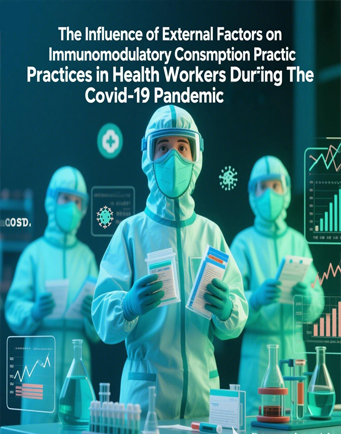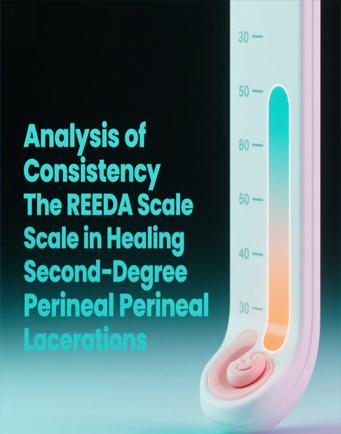Career Ladder Professionalism in Nursing: A Concept Analysis

Downloads
A defined career path for nurses is essential, as they constitute the largest segment of healthcare workers and hold strategic and leadership roles in determining the quality of patient care and overall hospital quality. This study aims to analyze the concept of professionalism in relation to the implementation of career paths for nurses within hospital settings. This concept analysis follows the steps outlined by Walker & Avant. A literature search was conducted using the PubMed, Scopus, ScienceDirect, and ProQuest databases to identify articles published between 2014 and 2024. After filtering, 9 articles were selected from various scientific disciplines such as nursing, medicine, education, and other health-related fields. This study identified three main attributes related to the clinical professional ladder: 1) integrity, 2) justice, and 3) beneficence. Antecedents include education, workshops/conferences, experience, and professional identity. Consequences include ethics, patient outcomes, nursing outcomes, future career opportunities, job satisfaction, retention, salary, and organizational commitment. This concept analysis enhances our understanding of the three attributes of the career ladder and professionalism (CLp) and provides insights into future development and uncertainties in nursing management. This concept is highly valuable for nurse management settings, particularly in enhancing professionalism through career path programs. Ultimately, this concept analysis approach encourages both new and experienced nurses to maintain professionalism in the delivery of nursing care.
Abu, V. K., & Moorley, C. R. (2023). Social justice in nursing education: A review of the literature. Nurse Educ Today, 126, 105825. https://doi.org/10.1016/j.nedt.2023.105825
Ahn, Y. S., & Choi, J. S. (2023). Nurses' perceptions of career ladder systems, job satisfaction and turnover intention: A cross-sectional study. Nurs Open, 10(1), 195-201. https://doi.org/10.1002/nop2.1294
Beauchamp, T., & Childress, J. (2019). Principles of Biomedical Ethics: Marking Its Fortieth Anniversary. Am J Bioeth, 19(11), 9-12. https://doi.org/10.1080/15265161.2019.1665402
Blais, K., & Hayes, J. (2015). Professional nursing practice: Concepts and perspectives (Seven Edition ed.). New York: Pearson.
Chandler, C. E., Williams, C. R., Turner, M. W., & Shanahan, M. E. (2022). Training Public Health Students in Racial Justice and Health Equity : A Systematic Review. Public Health Rep, 137(2), 375-385. https://doi.org/10.1177/00333549211015665
Cheraghi, R., Valizadeh, L., Zamanzadeh, V., Hassankhani, H., & Jafarzadeh, A. (2023). Clarification of ethical principle of the beneficence in nursing care: an integrative review. BMC Nurs, 22(1), 89. https://doi.org/10.1186/s12912-023-01246-4
Coleman, Y., & Desai, R. (2019). The effects of a clinical ladder program on professional development and job satisfaction of acute care nurses. Clinical Journal of Nursing Care Practice 3(1), 44-48. https://doi.org/10.29328/journal.cjncp.1001016
Correia, I., & Almeida, A. E. (2020). Organizational Justice, Professional Identification, Empathy, and Meaningful Work During COVID-19 Pandemic: Are They Burnout Protectors in Physicians and Nurses? Front Psychol, 11, 566139. https://doi.org/10.3389/fpsyg.2020.566139
Cummings, C. L., & Mercurio, M. R. (2010). Ethics for the pediatrician: autonomy, beneficence, and rights. Pediatr Rev, 31(6), 252-255. https://doi.org/10.1542/pir.31-6-252
Filani, M., Ennie, N., & Nuraini, T. (2019). Nurses’ understanding and perception of career ladder system are related to work motivation: A multicenter cross-sectional study in Aceh, Indonesia. Enfermería Clínica, 29(S2), 434-438. https://doi.org/10.1016/j.enfcli.2019.04.064
Ghamrawi, N., & Abu-Tineh, A. (2023). A flat profession? Developing an evidence-based career ladder by teachers for teachers-A case study. Heliyon, 9(4), e15037. https://doi.org/10.1016/j.heliyon.2023.e15037
Gilvari, T., Babamohamadi, H., & Paknazar, F. (2022). Perceived professional identity and related factors in Iranian nursing students: a cross-sectional study. BMC Nurs, 21(1), 279. https://doi.org/10.1186/s12912-022-01050-6
Haghighinezhad, G., Atashzadeh-Shoorideh, F., Ashktorab, T., Mohtashami, J., & Barkhordari-Sharifabad, M. (2019). Relationship between perceived organizational justice and moral distress in intensive care unit nurses. Nurs Ethics, 26(2), 460-470. https://doi.org/10.1177/0969733017712082
Hashish, E. A. A. (2020). Nurses' perception of organizational justice and its relationship to their workplace deviance. Nurs Ethics, 27(1), 273-288. https://doi.org/10.1177/0969733019834978
Ibrahim, A. M. (2024). Nurses' ethical responsibilities: Whistleblowing and advocacy in patient safety. Nurs Ethics, 31(7): 1289-1314. https://doi.org/10.1177/09697330241235306
Ivanov, L. L., & Oden, T. L. (2013). Public health nursing, ethics and human rights. Public Health Nurs, 30(3), 231-238. https://doi.org/10.1111/phn.12022
Karami, A., Farokhzadian, J., & Foroughameri, G. (2017). Nurses' professional competency and organizational commitment: Is it important for human resource management? PLoS One, 12(11), e0187863. https://doi.org/10.1371/journal.pone.0187863
Kim, Y. H., Jung, Y. S., Min, J., Song, E. Y., Ok, J. H., Lim, C., Kim, K., & Kim, J. S. (2017). Development and validation of a nursing professionalism evaluation model in a career ladder system. PLoS One, 12(10), e0186310. https://doi.org/10.1371/journal.pone.0186310
Lee, Y. W., Dai, Y. T., Chang, M. Y., Chang, Y. C., Yao, K. G., & Liu, M. C. (2017). Quality of Work Life, Nurses' Intention to Leave the Profession, and Nurses Leaving the Profession: A One-Year Prospective Survey. J Nurs Scholarsh, 49(4), 438-444. https://doi.org/10.1111/jnu.12301
Li, Y. H., Chou, M. C., Lin, L. D., Tsai, C. C., & Lin, M. H. (2022). Relationships between Willingness to Participate in the Nursing Clinical Ladder Program and Its Related Factors among Clinical Nurses. Healthcare (Basel), 10(2). https://doi.org/10.3390/healthcare10020369
Ni, Y.-x., Li, L., & Li, J.-p. (2023). Development and Psychometric Evaluation of the Career Growth Scale for Nurses. Asian Nursing Research, 17(4), 200-207. https://doi.org/10.1016/j.anr.2023.08.001
Pertiwi, B., & Hariyati, R. T. S. (2019). The impacts of career ladder system for nurses in hospital. Enfermería Clínica, 29, 106-110. https://doi.org/10.1016/j.enfcli.2019.04.016
Pertiwi, B., Hariyati, R. T. S., & Pujasari, H. (2021). “Hoping to be recognized, appreciated, and given clinical privilege”: A phenomenology study of new nurses’ experiences during orientation. Enfermería Clínica, 31, S72-S77. https://doi.org/10.1016/j.enfcli.2020.10.022
Poorchangizi, B., Borhani, F., Abbaszadeh, A., Mirzaee, M., & Farokhzadian, J. (2019). Professional Values of Nurses and Nursing Students: a comparative study. BMC Med Educ, 19(1), 438. https://doi.org/10.1186/s12909-019-1878-2
Rahmah, N. M., Hariyati, T. S., & Sahar, J. (2021). Nurses' efforts to maintain competence: a qualitative study. J Public Health Res, 11(2). https://doi.org/10.4081/jphr.2021.2736
Rudner, N. (2021). Nursing is a health equity and social justice movement. Public Health Nurs, 38(4), 687-691. https://doi.org/10.1111/phn.12905
Sandehang, P. M., Hariyati, R. T. S., & Rachmawati, I. N. (2019). Nurse career mapping: a qualitative case study of a new hospital. BMC Nurs, 18(Suppl 1), 31. https://doi.org/10.1186/s12912-019-0353-z
Seidlein, A. H., & Kuhn, E. (2023). When nurses' vulnerability challenges their moral integrity: A discursive paper. J Adv Nurs, 79(10), 3727-3736. https://doi.org/10.1111/jan.15717
Slagle, A., Wakim, N., & Gray, S. E. (2023). A global examination of clinical ladder programs - A synthesis of commonalities and opportunities for standardization. Worldviews Evid Based Nurs, 20(1), 56-63. https://doi.org/10.1111/wvn.12622
Stigger, D., Barlem, J. G. T., Stigger, K. N., Cogo, S. B., Piexak, D. R., & Rocha, L. P. (2022). Postgraduate nursing students' conceptions on scientific integrity and research ethics. Rev Bras Enferm, 75(3), e20210060. https://doi.org/10.1590/0034-7167-2021-0060
Su, Q., Yun, B., Yuet Foon Chung, L., Chen, L., Zuo, Y., Liu, J., & Han, L. (2021). Clinical teaching behaviour effects professional identity and transition shock in new nurses in western china: A cross-sectional study. Nurs Open, 8(5), 2605-2615. https://doi.org/10.1002/nop2.798
Tang, M., Sun, Y., Zhang, K., Luo, R., Liu, Y., Sun, H., & Zhou, F. (2022). Associated factors of professional identity among nursing undergraduates during COVID-19: A cross-sectional study. Int J Nurs Sci, 9(1), 107-113. https://doi.org/10.1016/j.ijnss.2021.09.005
University of Oxford. (2024). Professionalism. University of Oxford. Retrieved from: https://www.oxfordlearnersdictionaries.com/definition/english/professionalism?q=professionalism
van der Wath, A., & van Wyk, N. (2020). A hermeneutic literature review to conceptualise altruism as a value in nursing. Scand J Caring Sci, 34(3), 575-584. https://doi.org/10.1111/scs.12771
Vilendrer, S., Amano, A., Johnson, C. B., Morrison, T., & Asch, S. (2022). A qualitative assessment of medical assistant professional aspirations and their alignment with career ladders across three institutions. BMC Prim Care, 23(1), 117. https://doi.org/10.1186/s12875-022-01712-z
Walker, L., & Avan, K. (2019). Strategies for Theory Construction in Nursing (six edition ed.). Pearson.
WHO. (2016). Global strategic directions for strengthening nursing and midwifery 2016–2020. WHO. Retrieved from: https://www.who.int/publications/i/item/9789241510455
Xenakis, N. (2018). Creating a professional development platform to transform social work clinical practice in health care. Soc Work Health Care, 57(6), 440-464. https://doi.org/10.1080/00981389.2018.1454373
Yi, L. J., Cai, J., Ma, L., Lin, H., Yang, J., Tian, X., & Jiménez-Herrera, M. F. (2022). Prevalence of Compassion Fatigue and Its Association with Professional Identity in Junior College Nursing Interns: A Cross-Sectional Study. Int J Environ Res Public Health, 19(22). https://doi.org/10.3390/ijerph192215206
Zeng, L., Chen, Q., Fan, S., Yi, Q., An, W., Liu, H., Hua, W., Huang, R., & Huang, H. (2022). Factors influencing the professional identity of nursing interns: a cross-sectional study. BMC Nurs, 21(1), 200. https://doi.org/10.1186/s12912-022-00983-2
Copyright (c) 2024 JURNAL INFO KESEHATAN

This work is licensed under a Creative Commons Attribution-NonCommercial-ShareAlike 4.0 International License.
Copyright notice
Ownership of copyright
The copyright in this website and the material on this website (including without limitation the text, computer code, artwork, photographs, images, music, audio material, video material and audio-visual material on this website) is owned by JURNAL INFO KESEHATAN and its licensors.
Copyright license
JURNAL INFO KESEHATAN grants to you a worldwide non-exclusive royalty-free revocable license to:
- view this website and the material on this website on a computer or mobile device via a web browser;
- copy and store this website and the material on this website in your web browser cache memory; and
- print pages from this website for your use.
- All articles published by JURNAL INFO KESEHATAN are licensed under the Creative Commons Attribution 4.0 International License. This permits anyone to copy, redistribute, remix, transmit and adapt the work provided the original work and source is appropriately cited.
JURNAL INFO KESEHATAN does not grant you any other rights in relation to this website or the material on this website. In other words, all other rights are reserved.
For the avoidance of doubt, you must not adapt, edit, change, transform, publish, republish, distribute, redistribute, broadcast, rebroadcast or show or play in public this website or the material on this website (in any form or media) without appropriately and conspicuously citing the original work and source or JURNAL INFO KESEHATAN prior written permission.
Permissions
You may request permission to use the copyright materials on this website by writing to jurnalinfokesehatan@gmail.com.
Enforcement of copyright
JURNAL INFO KESEHATAN takes the protection of its copyright very seriously.
If JURNAL INFO KESEHATAN discovers that you have used its copyright materials in contravention of the license above, JURNAL INFO KESEHATAN may bring legal proceedings against you seeking monetary damages and an injunction to stop you using those materials. You could also be ordered to pay legal costs.
If you become aware of any use of JURNAL INFO KESEHATAN copyright materials that contravenes or may contravene the license above, please report this by email to jurnalinfokesehatan@gmail.com
Infringing material
If you become aware of any material on the website that you believe infringes your or any other person's copyright, please report this by email to jurnalinfokesehatan@gmail.com.





































